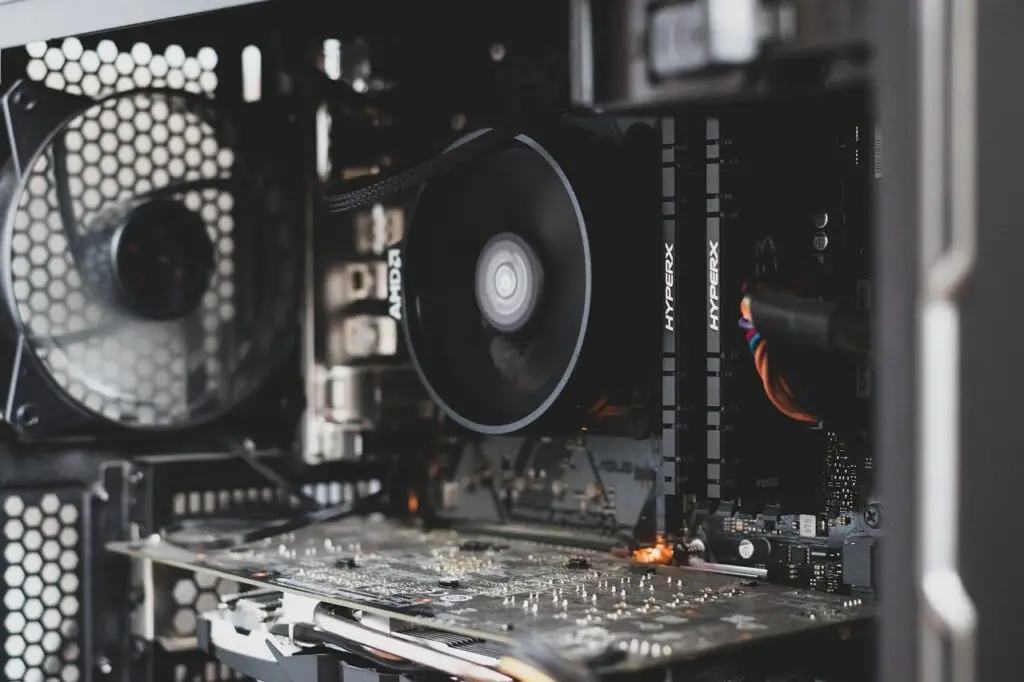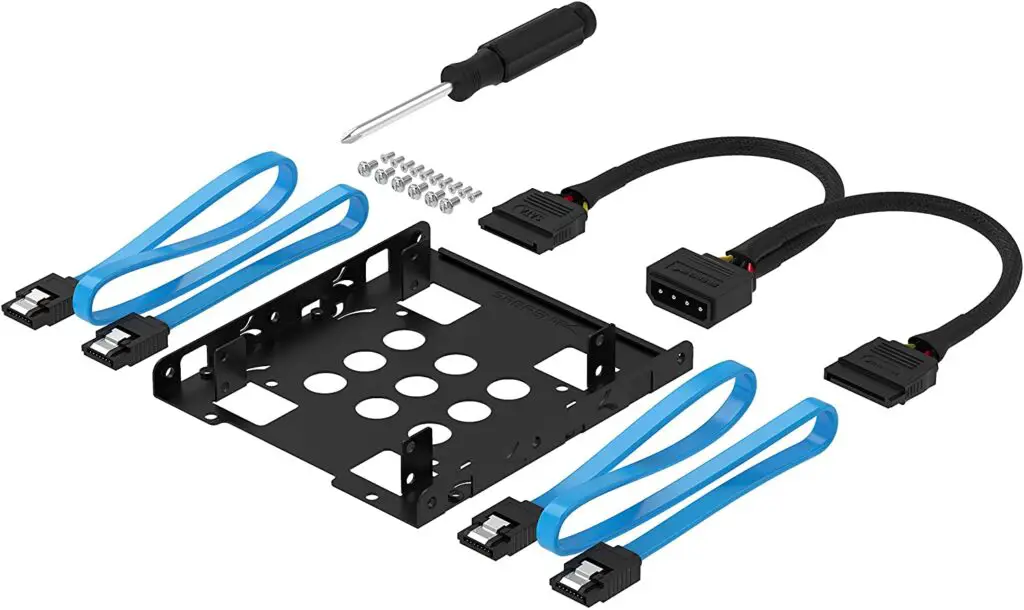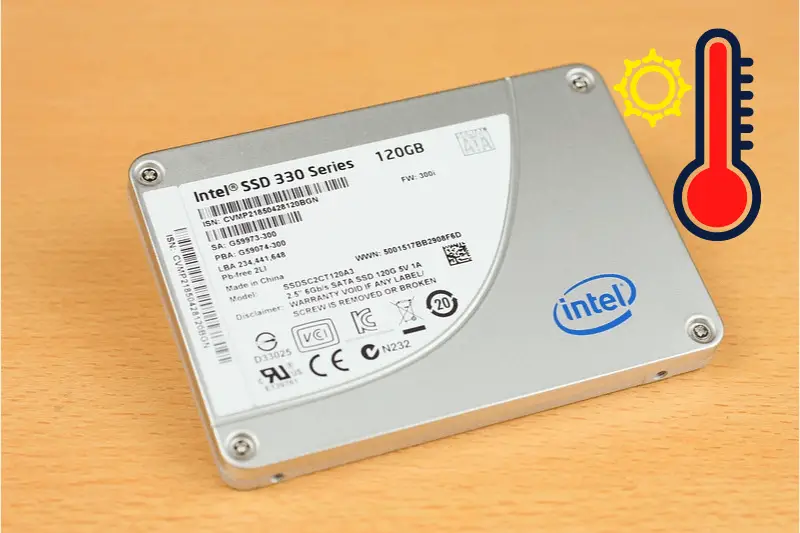The CPU (Central Processing Unit) is an integral part of the PC system. It’s responsible for all the operations that go on in your system.
Considering that they’re always on call in your system and they generate heat while working, they’re fitted with cooling fans for temperature regulation. Here we’ll highlight a few details about CPU fans.
The Facts on Why CPU Fans Always Spin
A CPU is an electric-powered device. All such devices generate some amount of heat while in use. Considering a CPU handles all the PC’s operations, it’s always working and thereby generates considerable heat. The CPU fan then has to always be on to keep it running at an acceptable temperature range.
Table of Contents

Does a CPU Fan Run All the Time?
The CPU is in essence the ‘brain’ of the computer. From the moment a PC is booted, the CPU is called into action, implying that nothing can go in your PC without the CPU’s direction.
That said, it’s clear that because of the critical role it plays in the computer system, it’s always involved in some work. Another point to keep in mind is that since it is powered by electricity, it produces waste in the form of heat as it functions.
The presence of heat can interfere with how well a CPU functions, and as such, proper precautions against it are required. CPU fans have the task of ensuring that the heat produced by the CPU is dissipated promptly. If the fans were to be disabled, CPU destruction could happen within seconds.
When should CPU Fan Start?
A CPU requires cooling around the clock. Based on how it’s built, the composition of its architecture, it’s capable of generating considerable amounts of heat within seconds.
Given this property of CPUs, they require their cooling fans to start operating immediately the PC is turned on.
The CPU is responsible for handling and executing all the operations that go on in your PC. Even at start-up, the CPU has to execute the booting operations, so it quite literally doesn’t get a break from the moment your PC is on.
Should the cooling fans not be working at start-up, you can’t expect your computer to complete the booting procedure. With insufficient cooling reaching it, the most that your CPU can allow happening is the Power On Self Test (POST), after which it would automatically shut itself down.
Why does my CPU Fan Stop Spinning?
A faulty CPU fan can lead to disastrous consequences for not only your CPU but the whole PC as a unit. Should you encounter such a problem, immediate troubleshooting is necessary to remedy the situation promptly.
Below we highlight a few common reasons to look out for that could cause your CPU fan to stop working:
Clogged Fan
The fan itself could have run into some form of interference. Throughout their functioning, fans have been found to accumulate dust and other fine particles. When they collect to a certain point, they can interfere with the fan’s spinning.
The fan blades themselves could also have something obstructing their spinning. Check that no objects like wires are interfering with their spinning.
Inadequate Power
The cooling fans get their energy from the power supply unit (PSU) on your PC. Should anything interfere with this connection (e.g. wires going faulty, abrupt disconnection, or issues with the PSU itself), then the fans can fail to spin.
BIOS Settings
If something interferes with the BIOS settings regarding the cooling fans, it could cause their failure to spin. Check that these settings are in order as you go about troubleshooting this issue.
Why does my CPU Fan Speed Up and Slow Down?
First off, it’s worth mentioning that the speed of a properly working CPU fan is never constant per se.
A CPU is always functioning, and given the severity of the task in execution, it can cause changes to its fan’s speed. When undertaking simple daily tasks or programs, the CPU fan speed isn’t that high.
When the CPU is involved in a resource-intensive task, it has to work harder, and inevitably produces more heat. This action results in the CPU fan spinning faster to do away with the extra heat being produced.
Having the PC in an idle state means no intensive tasks are ongoing. When the PC is in this state, the CPU fan slows down considerably since it’s not in use.
Should your CPU fan slow down and speed up outside of these parameters, a problem could be developing. Here are a few things to look out for in such a case:
- If it suddenly speeds up, an unknown resource could be occupying the CPU without your knowledge. Look through your active programs and stop them.
- If it slows down while the CPU performs intensive, resource-consuming tasks, the fan could either be experiencing power issues or its blades could have obstructions interfering with their spinning.
- The CPU fan can also speed up because of the ambient heat in your PC case. In such an instance, try to ensure proper airflow is provided since this ambient heat produced by the other components can affect the CPU.
- Running system diagnostics and looking through the fan settings can also help you discover if something is out of order.
Why Is CPU Fan Running So Fast?
A CPU fan typically spins at varying speeds, given the operation being undertaken by the CPU.
When the CPU is idle (the user isn’t running any tasks), the fan speed is low. Under normal CPU usage, it’s faster, and when executing some intensive programs (e.g. games or video editors), it spins even faster.
If your CPU fan is spinning faster than usual without good reason, it could be worth investigating the following possibilities:
- There could be a lot of ambient heat building up in the PC case, and the CPU fan has to spin faster to contain its effect on the CPU.
- That the fan could be faulty. (e.g. its experiencing wiring or connection problems)
- An unknown CPU-resource-consuming task is running without your knowledge.
- The CPU itself is faulty and is therefore generating more heat than expected. The CPU fan spins faster to keep up with this development.
- The CPU fan system settings have been changed to allow it to spin faster than usual.
How to Control CPU Fan Speed?
Controlling the speed of your CPU fan can be achieved in a few ways. For most major OS (Operating Systems), there are system settings tabs you can navigate to or otherwise opt for a 3rd party solution.
Windows users
The easiest way to control fan settings is to navigate to the BIOS settings. Though different windows versions have different layouts for their BIOS tab, the procedure remains similar.
Once there, navigate to the section dealing with Hardware monitoring settings. Here, navigate around to the CPU fan settings and change them accordingly.
Alternatively, you can opt to use a 3rd party program like Speedfan. It can allow you to make even more detailed settings for your CPU fan.
Mac Users
Download the Macs Fan Control program and install it on your system. Once installed, you can navigate it and make the required adjustments to your CPU fan’s settings.
How Fast Should the CPU Fan Run?
Because not all CPU fans are the same, an accurate numerical figure in RPMs (Rotations Per Minute) is hard to pinpoint across the board.
First, you need to find out the maximum RPMs your specific CPU fan can spin. This figure can help with setting up your CPU fan speeds. Next, download 3rd party programs (available for both Windows and Mac) that can allow you to view and change your CPU fan settings.
With these two steps done, you can adjust your CPU fan speeds according to the following criteria:
- That it should spin at a rate of 20%-40% of the total RPMs available when idling. (Usual temperatures equal to and below 50 °C)
- That it should spin at a rate of 40%-65% of the total RPMs available when in normal usage. (Usual temperatures equal to 50 °C and below 69 °C)
- That it should spin at a rate of 70% and higher of the total RPMs available when under heavy usage. (Usual temperatures higher than 70 °C)
How do I Make my CPU Fan Run at Full Speed?
Depending on the OS you’re running, you can change the CPU fan settings via system availed settings or via 3rd party programs.
For Windows, navigating to the BIOS settings is the first step. Next, navigate to the Hardware Monitoring tab, and under it, you should find the CPU fan settings. Here, you can select the settings or options that allow your CPU fan to run at full speed.
On the other hand, you could use a 3rd party program like Speedfan. For Mac users, Macs Fan Control program is available.
Using either of these two programs is relatively simple and one can easily adjust the CPU fan speeds to run at maximum output.
How do I know if my CPU Fan Is Working?
The fastest and easiest way to determine whether your CPU fan is working is by visually inspecting it. If everything is working as expected, it should be spinning without any unusual noise or stutters.
Furthermore, running occasional system diagnostics and checks on your system can tell you the state of most of your PC components, the CPU fan included.
If your PC is also handling programs and other task executions properly, then the CPU is in great shape. That wouldn’t be the case if the CPU fan wasn’t working since you’d experience massive lags in your daily activities.
How Long can a CPU Run Without a Fan?
At best, you can expect at least 10 seconds worth of CPU time when its fan isn’t working. 10 seconds can’t allow you to perform any computing tasks. In essence, a CPU can’t function without a properly working fan.
CPUs start to generate heat from when a PC is turned on, so cooling is an essential part of its functioning. This video here can demonstrate how significant cooling is for CPUs.
You can also read more about the importance of CPU cooling in this article.
How do I Fix my CPU Fan Not Spinning?
When your CPU fan is not spinning, an inspection of it and a troubleshooting session are required. Depending on what you discover to be the problem, apply the appropriate measures to remedy the situation.
Examples of such remedies include:
- Re-wiring the fan if the problem was a connection issue.
- Oiling the ball-bearings of the fan to allow it to spin better.
- De-clogging the fan to remove dust and debris that hampered its spinning.
- Checking the connection to the PSU if the issue was insufficient energy supply.




